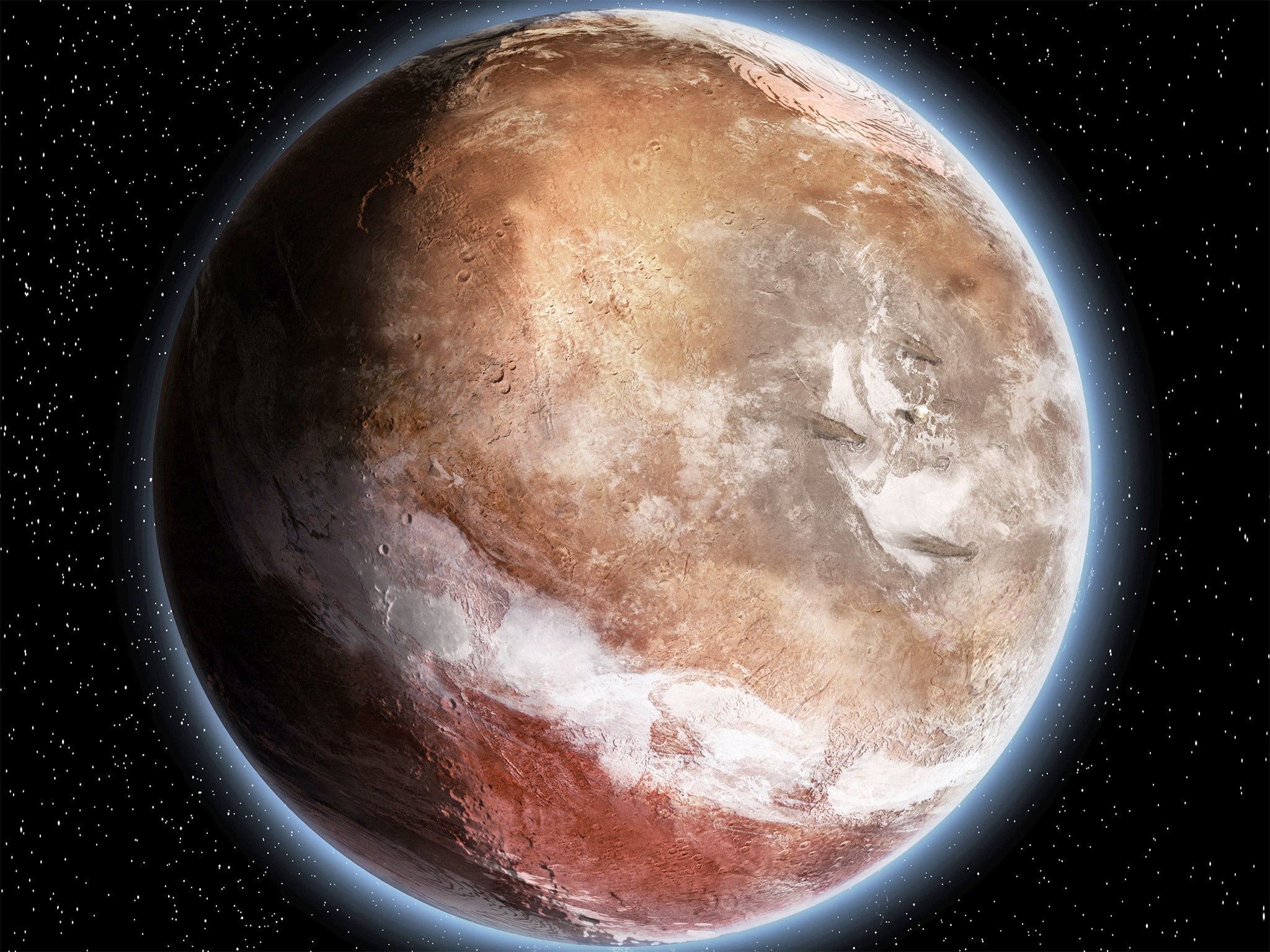Mars mega-tsunamis might offer clues to where alien life can be found, scientists say
The work could solve one of the central problems with the idea that Mars was covered with life-supporting oceans in its past

Your support helps us to tell the story
From reproductive rights to climate change to Big Tech, The Independent is on the ground when the story is developing. Whether it's investigating the financials of Elon Musk's pro-Trump PAC or producing our latest documentary, 'The A Word', which shines a light on the American women fighting for reproductive rights, we know how important it is to parse out the facts from the messaging.
At such a critical moment in US history, we need reporters on the ground. Your donation allows us to keep sending journalists to speak to both sides of the story.
The Independent is trusted by Americans across the entire political spectrum. And unlike many other quality news outlets, we choose not to lock Americans out of our reporting and analysis with paywalls. We believe quality journalism should be available to everyone, paid for by those who can afford it.
Your support makes all the difference.Huge “mega-tsunamis” on ancient Mars could show that the red planet was once covered with vast oceans that sustained alien life.
The shores that could be found might make places to find signatures of the microbial life that is thought once to have existed on the planet’s surface, researchers said.
Scientists have long found it difficult to pick out the shorelines that would have been created by a hypothesised sea that covered the planet billions of years ago. But a new study suggests that the shorelines were characterised by two huge meteor impacts that sent giant waves across the surface’s planet.
Those tsunamis would have reached as high as 120 metres tall and were caused by two meteor strikes that were millions of years apart, according to the new research.
When they crashed into the planet, they left huge ruptures in its surface and left deposits along its northern plains. Those same sediments can be used to see the shorelines of the huge oceans that once covered the planet.
The sediments are thought to mark out the shorelines of large expanses of water that once covered the Martian lowlands.
Dr Alexis Rodriguez, from the Planetary Science Institute in Tucson, US, said: "For more than a quarter century, failure to identify shoreline features consistently distributed along a constant elevation has been regarded as inconsistent with the hypothesis that a vast ocean existed on Mars approximately 3.4 billion years ago.
"Our discovery offers a simple solution to this problem; widespread tsunami deposits distributed within a wide range of elevations likely characterise the shorelines of early Martian oceans."
Between the two impacts, Mars went through a period of frigid climate change with liquid water turning to ice.
The second tsunami formed rounded lobes of ice whose structure suggested that the ancient ocean was briny.
Co-author Dr Alberto Fairen, from the Centre of Astrobiology in Madrid, Spain, said: "It is difficult to imagine Californian beaches on ancient Mars, but try to picture the Great Lakes on a particularly cold and long winter, and that could be a more accurate image of water-forming seas and oceans on ancient Mars."
The icy tsunami lobes would be "very good candidates" for places to search for biosignatures of microbial life, he said.
The research is published in the journal Scientific Reports.
Additional reporting by agencies
Join our commenting forum
Join thought-provoking conversations, follow other Independent readers and see their replies
Comments